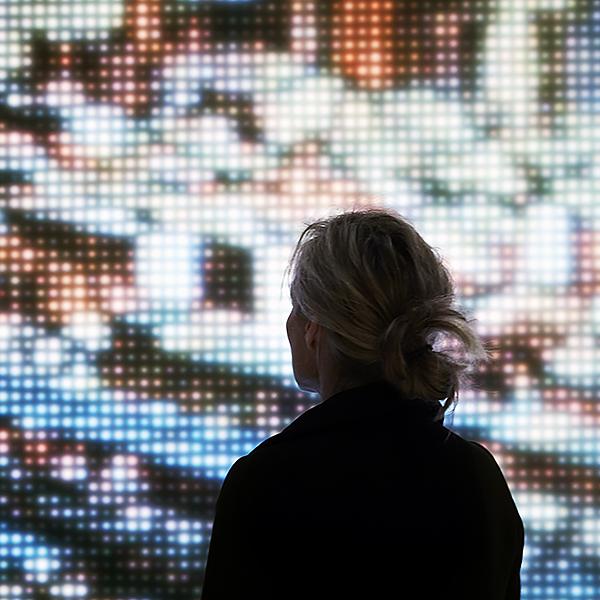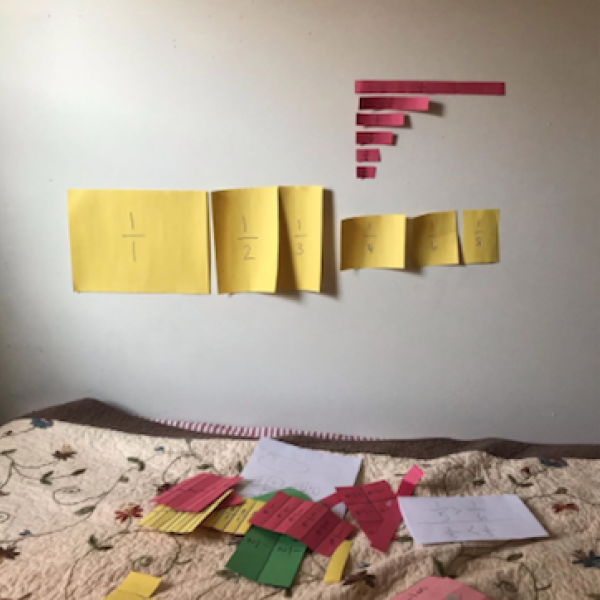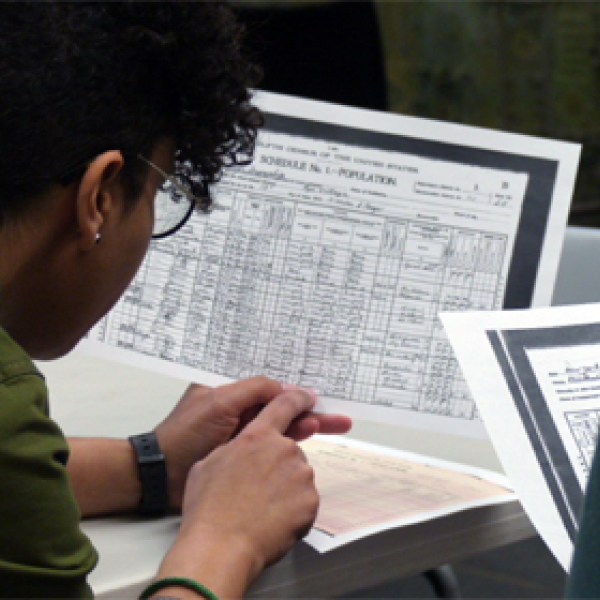Teachers, Now is a Great Time for Oral History
Friday, May 29, 2020 by
The Museum of the City of New York’s Frederick A.O. Schwarz Education team has been hard at work brainstorming how we can best serve teachers and students during the move to remote learning. This is the third in a series of Education posts on the MCNY Stories page highlighting how the Museum’s resources—from digital collections, to lesson plans, to professional development opportunities—can help teachers and students navigate the waters of online learning during the COVID-19 pandemic.
History happens every day in every place. Whether it be a bill passing in the halls of Congress or a television program playing in your living room, it all counts as the great and messy drama of the human experience, worthy of historical consideration. Yet given the current global crisis in the face of the Covid-19 pandemic, we are acutely aware of “history happening” in this particular moment, especially as New York City occupies the epicenter of the virus in the United States. Historians of the future will no doubt spend countless hours and pages analyzing the pandemic’s impact on politics, economics, and daily life—and we’re living right through this watershed moment.
Now is, therefore, an excellent time to lead students through an oral history project, harnessing the hours at home to connect and listen to one another, all the while creating the primary sources of tomorrow. Below we offer a brief overview of the methodology of oral history, a way of “preserving and interpreting the voices and memories of people, communities, and participants in past events” [1], as well as a project idea with resources to bring these interviews to fruition in an online setting.
Oral History: Past and Present
As a genre, oral history has many roots. Storytelling and oral traditions have been crucial to the preservation of historical memory for many civilizations around the world—from Homer and Thucydides in ancient Greece, to ancient and contemporary African griots, to the stories families pass down through generations around the globe. As a recognized research practice in the United States, oral history has antecedents in the Federal Writers’ Project of the 1930s, a New Deal program that funded the transcription of hundreds of “life histories” with everyday Americans, including potato farmers and formerly enslaved individuals. [2] A number of famous writers and artists worked with the FWP, including Zora Neale Hurston and Studs Turkel, whose radio oral history interviews became a bedrock of the genre. Oral history garnered an even greater following in the late 1940s and 1950s through the work of New York-based Columbia University professor Allan Nevins, who used oral interviews and new tape-recording technology to supplement his research on President Grover Cleveland, launching what is now the well-respected Columbia Oral History program.
By the 1960s and 1970s, amidst the ferment of the civil rights movement, oral histories gained even more traction in the United States and around the world. For example, African-American writer Alex Haley’s reliance on oral history in his popular books The Autobiography of Malcolm X (1965) and Roots (1976), which also became a hit television series, inspired a new generation of historians interested in memory, social justice, and “history from below.” Ever since, oral history has served as a crucial means to supplement the traditional archive, bringing hidden voices to light, adding texture and nuance to history, and literally giving individuals and communities the microphone to tell their own stories. When “social history,” post-structuralism, and feminist theory assumed prominence in the 1980s, oral history was an ideal medium to capture the texture of everyday life and challenge previous notions of authoritative “truth.” With the advent of digital technology and the ability to easily record and archive oral interviews beginning in the 1990s, the potential for oral histories seemed endless. Oral history is now a well-accepted practice within university and community-based history circles, and the theory and practice of the field continues to develop. [3]
As a museum, MCNY primarily tells stories with objects and artifacts, but oral histories have proven a valuable supplement in documenting and interpreting the history of New York City. For example, in last year’s exhibition Pride = Power!, which celebrated the 50th anniversary of the Stonewall Uprising, the curators chose to include oral histories of key figures in the fight for LGBTQ+ liberation to supplement the photographs of photojournalist Fred W. McDarrah. The voices and recollections of key activists and allies, such as Marsha P. Johnson and Jeanne and Morty Manford, brought the history of Stonewall and the subsequent Christopher Street Liberation Day and pride parade to life.
Oral Histories in the Classroom
Oral histories are not for curators or “professional” historians alone; they can serve as invaluable tools for students and educators in many grade levels and subject areas. For history and social studies teachers, they are primary sources that can help students understand a topic or era of study. They can also act as a helpful entry point for discussing the uneven and often unfair nature of “the archive” (the primary sources that are kept and preserved in institutions). They are equally valuable for discussing the historical thinking skills of perspective-taking and source corroboration, since memory is tricky and oral histories call for careful analysis. For teachers of other subjects, like math or science, oral histories can engage students in the topic at hand, whether it be an interview with a scientist that invests them in a lab (we particularly love these interviews with scientists from the History Makers project), or a life history that adds a human voice to a data set being analyzed in a math lesson.
Oral histories can also remind students that history happens in their own communities, with people that look and sound like them. As folklorist Tom Rankin has said, “Out of shared telling and remembering grow identity, connection, and pride, binding people to a place and to one another.” [4]. A number of New York City-specific digitized oral history collections are free and available for public use, including the Brooklyn Historical Society Oral History Collections, New York Public Library Community Oral History Project, and the Queens Memory project. Teachers themselves can also learn a great deal about their students by spending time listening to oral histories and life stories from their students’ families and communities.
COVIDStoriesNYC: Oral History Project Ideas
MCNY is currently soliciting images via social media that capture life during coronavirus in New York City through the #COVIDStoriesNYC project. The initiative has captured everything from a hauntingly empty subway ride to the warm embrace of essential health care workers. Your own CovidStoriesNYC project could instead draw on the genre of oral history to capture and preserve life as we are currently experiencing it citywide.
A Covid-19 oral history project is adaptable for many grade levels and subject areas. Here are a few tips and plenty of resources for guiding students through a successful project:
- Link the oral history project to your class’s learning goals.
- Whether you are an elementary teacher reviewing the definition of community or an ELA teacher examining the theme of identity, oral history projects can be easily tailored to fit your scope and sequence. While they lend themselves well to the history and social studies classroom, there are many opportunities to creatively integrate oral history projects into your subject area.
- Take time to engage students in the genre of oral history through a guided listening exercise.
- Students will benefit from hearing examples of oral histories before setting off to conduct their own. It may be helpful to listen to and analyze an oral history together as a class, then ask students to choose one interview to analyze independently from one of the oral history collections linked above. Provide them with a list of guided questions, such as “Tips for Analyzing Taped and Transcribed Oral History Interviews” in this educator guide produced by the Smithsonian Museum of American history.
- Lead a mini workshop for conducting a successful and respectful oral history using online resources (no experience needed!).
- The internet is abuzz with resources and advice for conducting oral histories. The educator resources page on the Oral History Association website is a good place to start, which includes links to a number of helpful guides. Also feel free to use our MCNY oral history educator resource guide and best practices sheet, materials produced for a P-Credit course centered on the theme “People of New York.” Story Corps, a project run in partnership with the American Folklife Center at the Library of Congress, also offers amazing resources related to oral history, including this list of potential interview questions and this StoryCorps Connect tool developed in response to the pandemic, which allows the public to add interviews to the collective archive. It’s in the very spirit of the genre to take historical research out of the hallowed halls of the university and into communities, so don’t worry if you’re not an expert yourself before leading students through a project.
- Draw on digital technology to send students into the community without leaving their homes.
- Under normal circumstances, it’s ideal to sit face-to-face with your oral history interviewee. Yet during a time of self-isolation—or even after when travel is not possible—you can draw on the incredible array of free digital tools for students to record the audio and video of their oral history interviews. Zoom and StoryCorps Connect workswell, as do other free videoconferencing and audio transcription devices. Here is a list of helpful tech tips for oral interviews from Groundswell.
- Offer a creative opportunity for analysis and assessment.
- The act of conducting and oral history and then writing a reflection essay may be the best way to approach a COVID-19 oral history project. There are also a number of other creative summative assessments that students could produce after conducting their interview. For instance, you could require individual students or groups to produce a digital museum exhibit, which draws on their oral history interview(s) but also adds other sources and context. Use Google Classroom’s presentation feature, Prezi, or other online tools as the “gallery space.” Or, invite students to produce a creative project inspired by their oral history that captures the interview’s major themes and ideas, whether that be a comic strip, drawing, painting, song, or short story.
- Be sensitive to student needs and offer a project option not related to COVID-19.
- For some students, even more focus on the pandemic may cause heightened stress or social-emotional challenges—particularly for students and families that have been more directly impacted by Covid-19 related hardship. You may want to consider allowing students to interview a family or community member about a historical topic that is not related to the current crisis but nevertheless relevant to your curriculum.
- Archive the oral histories online for future use by students and/or community members!
- Oral histories by definition are to be preserved for future use by researchers. This is not a requirement for a class project, per se, but you may want to consider archiving the interviews online in a format that you can return to again with future classes or that community members can access. Google Classrooms allows for storage and sharing capabilities, as do a number of free platforms such as WordPress and DropBox. Just make sure to communicate with interviewees and obtain their consent if the interviews will be made public, both before and after the interview. See the MCNY best practices guides for more information.
New York City students are in a unique position to capture the stories of fellow New Yorkers impacted by Covid-19. And we’d love to hear how they are making history. Send us a note at pd@mcny.org letting us know if you are leading an oral history project with your class!
Works Cited:
[1] “Oral History: Defined,” Oral History Association, https://www.oralhistory.org/about/do-oral-history/.
[2] “American Life Histories: Manuscripts from the Federal Writers’ Project, 1936 to 1940” Library of Congress, https://www.loc.gov/collections/federal-writers-project/about-this-collection/; “Born in Slavery: Slave Narratives from the Federal Writers Project, 1936 to 1938,” Library of Congress, https://www.loc.gov/collections/slave-narratives-from-the-federal-writers-project-1936-to-1938/about-this-collection/.
[3] Robert Perkins and Allstair Thomson, The Oral History Reader, Third Edition (New York: Routledge, 2016).
[4] Tom Rankin as quoted in “The Smithsonian Folklife and Oral History Interviewing Guide,” Smithsonian Center for Folklife and Heritage, https://folklife.si.edu/the-smithsonian-folklife-and-oral-history-interviewing-guide/smithsonian.








